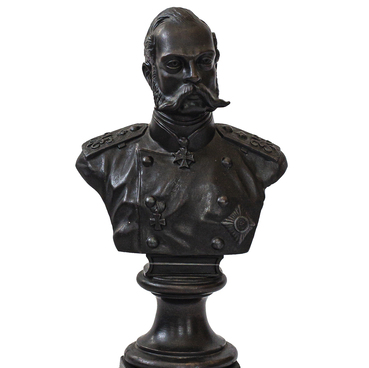Emperor Alexander III, the second son of Alexander II and Maria Alexandrovna, was born in 1845. He received a traditional for the great princes military and engineering education. In 1865, after the death of his elder brother Nicholas, Alexander became the crown prince, that is, the future heir to the throne.
Alexander III was proclaimed emperor on March 1, 1881, after the terrorists had murdered Alexander II. On April 29, 1881, he issued a manifesto “On the Inviolability of the Autocracy”, which defined the main directions of domestic policy of the Russian Empire during his reign. Alexander III initiated some reforms, which were in line with his ideas about the patriarchal and patriotic autocratic rule, the role of religious values in people’s lives, the need to strengthen the class structure.
Alexander III also paid special attention to industrial modernization. In March 1883, the Committee of Ministers of the Russian Empire allowed the construction of railroads and in December 1885, a regular railway connection between Yekaterinburg and Tyumen was opened. Steel rails, produced by Nikita Demidov’s Nizhnesaldinsk factory, were laid all along the track. The author and chief advocate of the project were Yevgeny Bogdanovich, a member of the Council of the Ministry of Internal Affairs of the Russian Empire.
The construction of the railroad between Yekaterinburg and Tyumen improved the supply of food to the Volga and Urals, connected the basins of the Kama and the Ob, and in the future promised access to the Chinese border. This industrial project contributed to the transformation of Tyumen into a major trade and transport center for the region.
The master Bykov (his name was not preserved) cast the bust of Alexander III, presented at the exhibition, at the Kaslinsky ironworks. The sculptor and medalist Mikhail Kanayev created the form for the bust. A graduate of the Russian Academy of Arts, he worked at the Kaslinsky factory in 1871–1880 and created several models for artistic casting. In the 1880s, the Kaslinsky factory started casting cast-iron sculptures.
Alexander III was proclaimed emperor on March 1, 1881, after the terrorists had murdered Alexander II. On April 29, 1881, he issued a manifesto “On the Inviolability of the Autocracy”, which defined the main directions of domestic policy of the Russian Empire during his reign. Alexander III initiated some reforms, which were in line with his ideas about the patriarchal and patriotic autocratic rule, the role of religious values in people’s lives, the need to strengthen the class structure.
Alexander III also paid special attention to industrial modernization. In March 1883, the Committee of Ministers of the Russian Empire allowed the construction of railroads and in December 1885, a regular railway connection between Yekaterinburg and Tyumen was opened. Steel rails, produced by Nikita Demidov’s Nizhnesaldinsk factory, were laid all along the track. The author and chief advocate of the project were Yevgeny Bogdanovich, a member of the Council of the Ministry of Internal Affairs of the Russian Empire.
The construction of the railroad between Yekaterinburg and Tyumen improved the supply of food to the Volga and Urals, connected the basins of the Kama and the Ob, and in the future promised access to the Chinese border. This industrial project contributed to the transformation of Tyumen into a major trade and transport center for the region.
The master Bykov (his name was not preserved) cast the bust of Alexander III, presented at the exhibition, at the Kaslinsky ironworks. The sculptor and medalist Mikhail Kanayev created the form for the bust. A graduate of the Russian Academy of Arts, he worked at the Kaslinsky factory in 1871–1880 and created several models for artistic casting. In the 1880s, the Kaslinsky factory started casting cast-iron sculptures.



